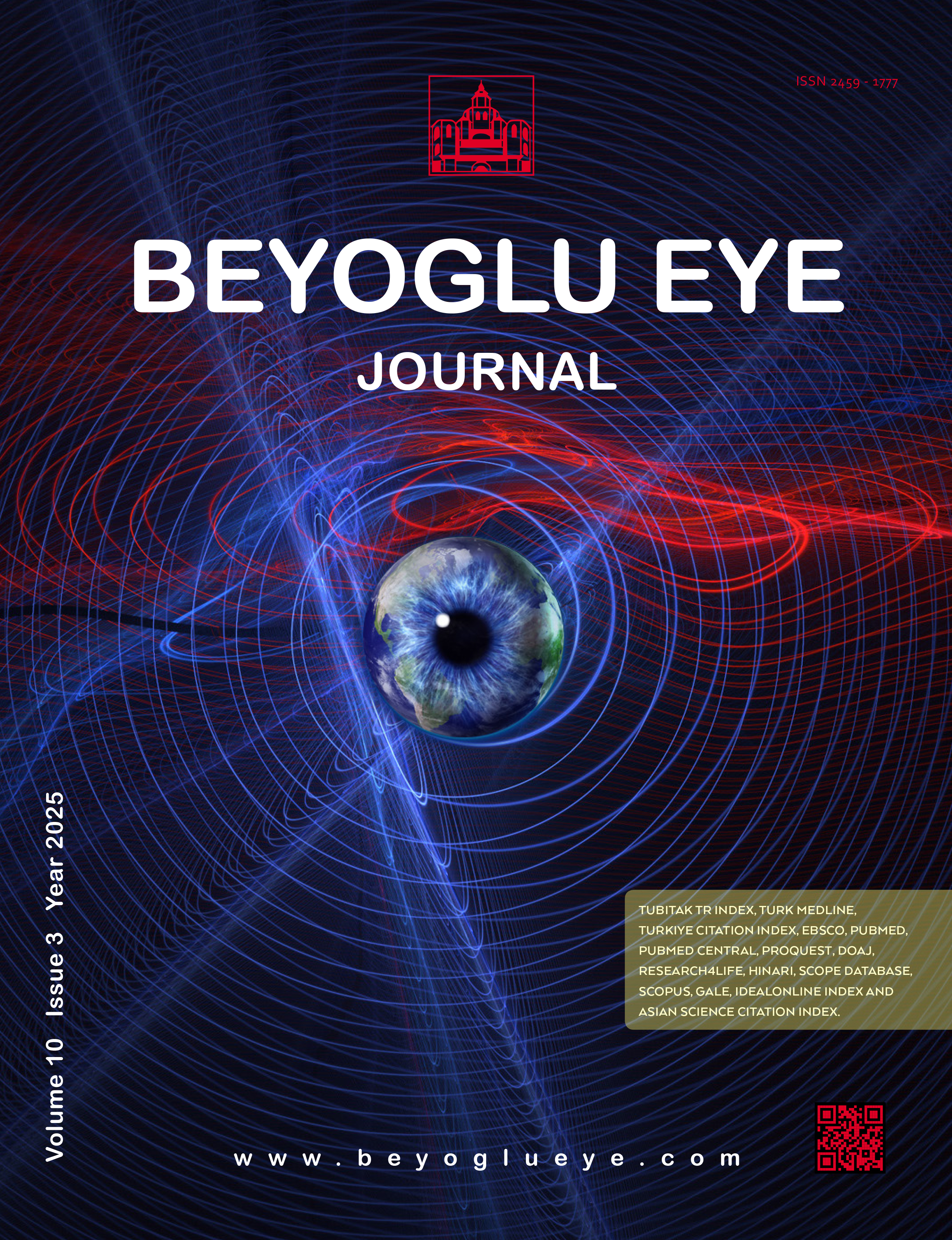
Incidence of Retinopathy of Prematurity Between 2021 and 2024: Results from a Single Center
Osman Kizilay1, Serap Karaca2, Bilge Batu Oto3, Gokhan Celik11Department of Ophthalmology, ROP Screening, Treatment and Training Center, Zeynep Kamil Maternity and Children's Disease Training and Research Hospital, Istanbul, Türkiye2Department of Ophthalmology, Goztepe Prof. Dr. Suleyman Yalcin City Hospital, Istanbul, Türkiye
3Department of Ophthalmology, Istanbul University-Cerrahpasa, Cerrahpasa Faculty of Medicine, Istanbul, Türkiye
OBJECTIVES: Retinopathy of prematurity (ROP) is a multifactorial disease characterized by abnormal vascularization of the immature retina. Although the most important risk factors are gestational age (GA) and birth weight (BW), the quality of neonatal intensive care also affects its incidence. This study aimed to evaluate the incidence of ROP and the need for treatment in infants screened for ROP according to the 2021 Turkish Prematurity Screening Guidelines for Retinopathy.
METHODS: Records of premature babies screened for ROP at a single center between January 2021 and December 2024 were retrospectively evaluated. The results of the examinations, need for treatment, and hospital centers where prema-ture infants were examined in accordance with the new guidelines were recorded.
RESULTS: Between 2021 and 2024, 8,503 premature infants were screened for ROP at our clinic. A total of 1,623 infants were diagnosed with ROP, and 147 were treated using either laser photocoagulation or intravitreal bevacizumab. The number of babies with a BW over 1,700 g who were screened for ROP was 6,581; of these, 738 (11.21%) developed ROP, and 28 babies (0.42%) were treated. The number of babies born at ≥34 weeks GA and who were screened for ROP was 4,029; of these, 173 (4.29%) developed ROP, and one baby (0.024%) was treated. Among the 1,623 patients diagnosed with ROP, 147 were treated, and 1,476 had spontaneously regressed ROP.
DISCUSSION AND CONCLUSION: Significant ROP requiring treatment may occur in infants born at >34 weeks of gestation and/or with a BW ≥1,700 g.
Manuscript Language: English









